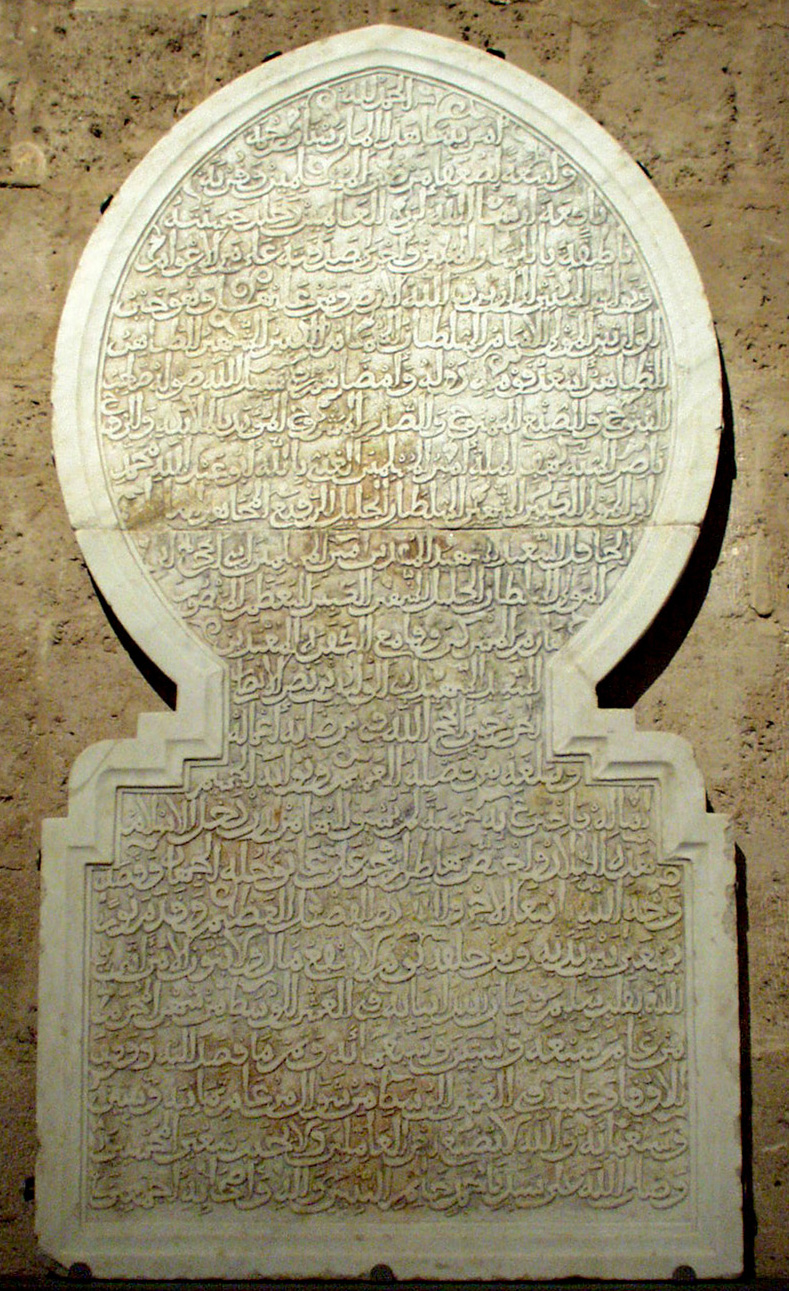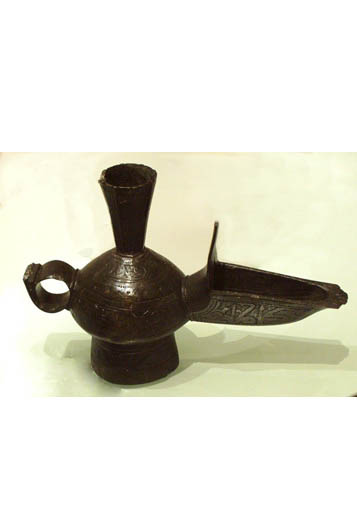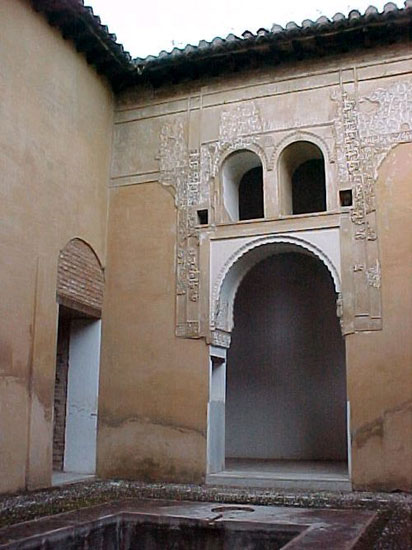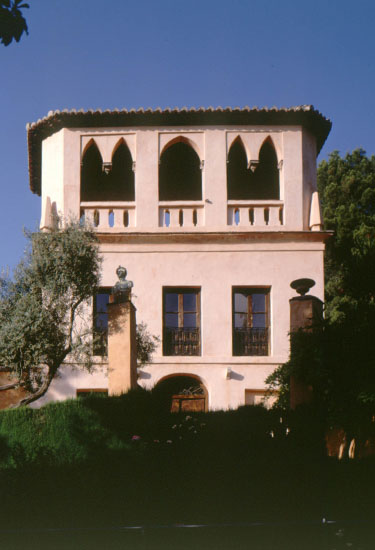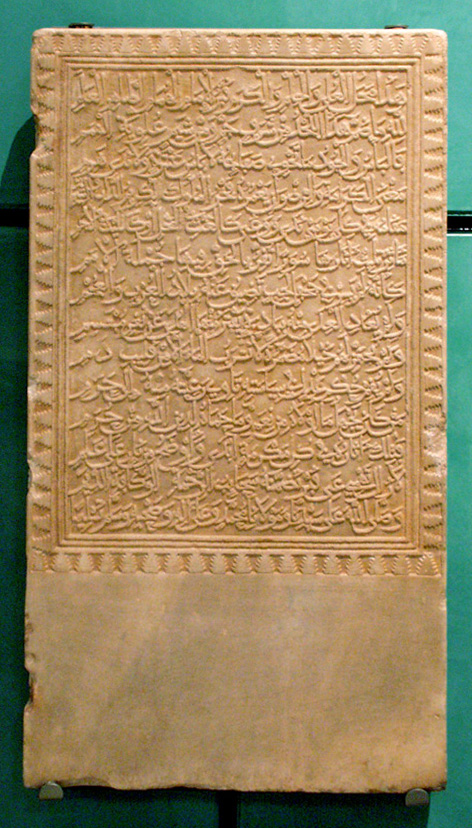Epigraphic frieze from the Mexuar
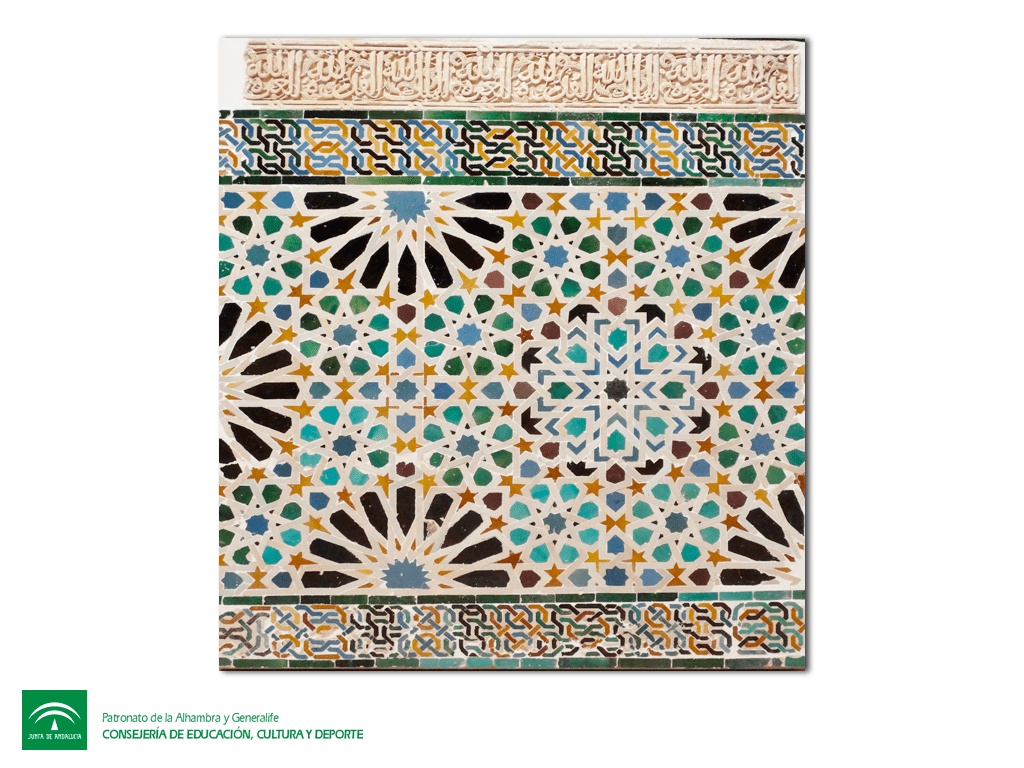
Ms Mariana Kalaitzidou
Islamic architecture on the Iberian Peninsula reached a peak of elegance and refinement in the Alhambra of Granada. The majesty of its buildings is the result of a special combination of the materials and styles used in its construction. Perhaps the most striking form of decoration is the Arabic epigraphy that lines its walls. The fact that writing is a means of materializing, transmitting and conserving a message that conveys the word of God means that epigraphy has always had an important role in Islamic decoration.
The clearest architectural functions of ornamental epigraphy are to structure the surfaces of the walls and to provide valuable information about the building itself. It is also a means of transmitting a message and an important part of the decoration.
The most typical decorative features in the Alhambra have geometric, plant-related or epigraphic motifs that have become its hallmarks. These three motifs can be seen in the epigraphic frieze from the Mexuar, the subject of this month’s guided visit, in which they are harmoniously combined and interwoven so offering a unique, incomparable visual spectacle. The aim of the guided visit is to inform visitors about the different types of decoration and epigraphic messages that can be found in the Alhambra. Information about the epigraphic frieze will be completed by contextualizing the piece within its surroundings.
Time: Saturdays at 12.00
Place: Room V, Museum of the Alhambra, Palace of Charles V





 Contact
Contact






